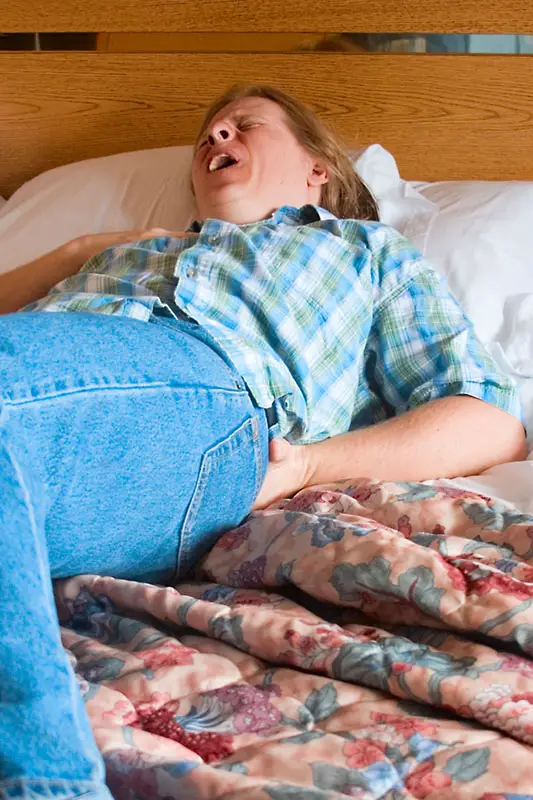Do a kick sometimes implies injury, fracture or pain. Speaking of pain, it is possible that this is related to nerve damage sciatica. In this article, we will see whether it is possible to get sciatica after a fall.
What is sciatica?
La sciatica, also called sciatic neuritis, is a condition that affects the longest and bulkiest nerve in the body, called the sciatic nerve.
The pathology is characterized by symptoms related to the route of the nerve: from the lower part of the spine, towards the back of the leg and to the toes.
A person with a sciatica may thus complain of a sharp, stabbing pain in the lower back (lumbosciatica), weakness, numbness or tingling in the leg. Sometimes, to these is added the difficulty in keeping the spine straight and pain when walking.
Although each lower limb is crossed by the sciatic nerve, the involvement is usually unilateral. However, it is possible that it manifests itself at the same time at the level of the two lower limbs (Not to be confused with the cauda equina syndrome which constitutes a medical emergency).
Several causes may be involved in the occurrence of sciatica. The most common cause is compression of the sciatic nerve by herniated disc (in 85% of cases), mainly at the level of its nerve roots (at the level of L4, L5 and S1, S2, S3).
And among the less frequent causes, there are vertebral osteoarthritis, all infectious and inflammatory pathologies of the spine, tumor pathologies of the spine or nearby, and as well as the heart of our subject: trauma or dorsal point of impact falls ou diaper.
Why does a fall cause sciatica?
Le piriformis syndrome is a common source of sciatica during a kick on the posterior side of the body. This syndrome corresponds to a compression or irritation of the sciatic nerve by the piriformis muscle (or pyramidal muscle of the pelvis). The latter is located at the hip, in the same area as the gluteal muscles. The sciatic nerve passes below and perforates it in 12% of cases.
If the piriformis muscle is too contracted or in spasm in post traumatic, it swells and will irritate the sciatic nerve. As a result, the sciatic nerve becomes irritated and inflamed as it passes through the hip. Pain is therefore felt in the buttocks and hip and towards the back of the leg. This stipulates an injury to the L5 root. Discomfort can also radiate to the thigh, calf and sometimes the foot. Low back pain can often be associated with it.
To confirm this sciatica secondary to a piriformis syndrome, the doctor must first rule out any other cause (lumbar, etc.). Thereafter, various physical examinations should be performed.
- THEinspection whereby an increase in passive external rotation and a decrease in passive internal rotation can be found.
- La sciatica palpation at the piriformis.
- La freiberg maneuver: the patient lies in the supine position. Movements of flexion, adduction and internal rotation at the level of the symptomatic limb will trigger the pain.
- La Pace and Nagle maneuver: the patient is in a sitting position with the legs hanging down. The operator will maintain the knees in opposition to a bilateral abduction of the two hips. This maneuver will cause pain by an isometric contraction of the piriformis.
- La beatty maneuver: the patient is placed in a lateral decubitus position on the healthy side. The foot on the suspect side is then placed opposite the popliteal fossa, hips in flexion, adduction, internal rotation. Then, we will ask him to lift his knee and maintain this position for 30 seconds. The maneuver causes pain.
Complementary examinations can sometimes be useful to help with the diagnosis. L'electromyography is at the top of the list. Not only is it for diagnostic purposes, but it also makes it possible to eliminate other pathologies such as root damage. The other examinations are ultrasound, CT and MRI.
How to relieve these symptoms?
simple measures can be adopted to alleviate and eliminate these symptoms. We can cite:
- applying ice to painful areas;
- self-massage;
- temporarily stopping various activities and positions that can trigger pain (running, cycling, sitting for 10 to 20 minutes, etc.);
- performing specific stretching exercises at the posterior hip and piriformis to alleviate piriformis syndrome.
For relief and faster healing, the opinion and examination of a general practitioner or specialist is always necessary.
The treatment used is most often medication, such as:
- injection of corticosteroids near where the piriformis muscle crosses the sciatic nerve ;
- medication analgesics : paracetamol, whether or not associated with a more powerful analgesic (codeine, tramadol or even morphine), depending on the degree of pain;
- The nonsteroidal anti-inflammatory drugs (ibuprofen, ketoprofen or aspirin);
- The muscle relaxants to relieve painful muscle contracture.
La functional rehabilitation (kinesitherapy, classic ultrasound physiotherapy) is also prescribed for better recovery.
As regards the surgical treatment, it is recommended only in exceptional cases, such as following a failure of medical treatment and diagnostic certainty. It rests on the neurolysis of sciatica, disinsertion of the piriformis, and theevacuation a possible hematoma or abscess. Currently, a less invasive approach is possible, thanks to arthroscopy.
When should we be worried?
It is absolutely necessary to worry in case of persistence and aggravation of pain and various symptoms, despite the various methods and measures used. In these cases, it is necessary to consult the attending physician for more advanced management and better monitoring.
In addition, seriousness also arises in the face of polytrauma. That is to say, before a kick more intense and by which the injured person bears one or more traumatic lesions, at least one of which is life-threatening. In this case, emergency hospitalization is necessary.
References
https://www.sciencedirect.com/science/article/abs/pii/S1624568722000841
https://www.vidal.fr/maladies/appareil-locomoteur/douleur-sciatique.html


